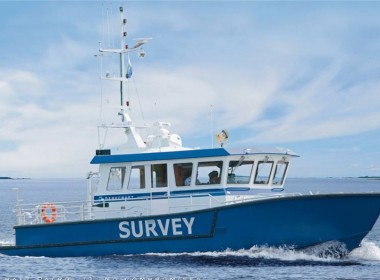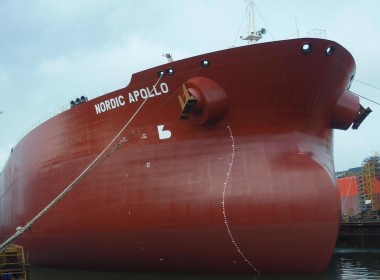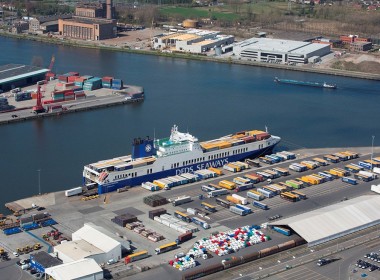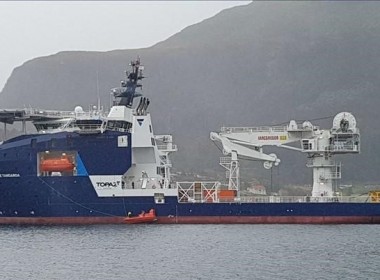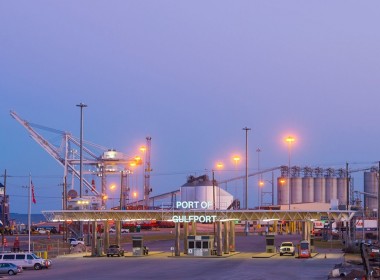OPINION | From NORAD to NOR[A]D: The future evolution of North American defence cooperation
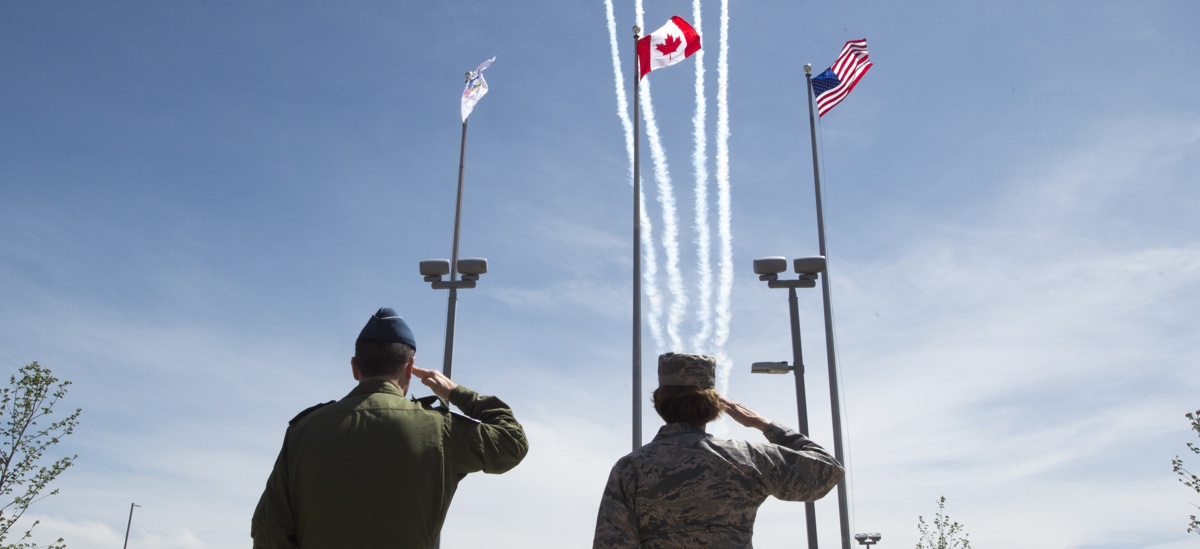
The North American defence environment is in the process of a major transformation, occasioned by dramatic changes in the geostrategic/political landscape and the development of new generations of weapon systems. As a result, the requirements to deter, detect and defend North America from a variety of new threats are transforming.
In this context, Canada and the United States, through the Permanent Joint Board of Defense (PJBD) established the Evolution of North American Defense (EvoNAD) study, and tasked its execution to the North American Aerospace Defense (NORAD) command. EvoNAD considers a long time horizon and has been broken into subcomponents reflecting six domain priorities: air, maritime, cyber, aerospace, space and land.
The overarching factor which binds the six components together is the recognition that the single-domain threat environment is evolving into a multi-domain one. In the past, the threat to North America resided largely on a single axis (north-south), within a dominant domain (air, combined with ballistic missiles), met by a bi-national structure. While this threat seemed to collapse with the end of the Cold War, NORAD continued and evolved to adapt to new threats as well as to continue to monitor the Cold War-styled air and aerospace threats.
Subsequently, 9/11 created a new threat environment and forced NORAD to consider threats emanating from within North America as well as outside of it. In addition to a number of changes, including direct feeds from the Federal Aviation Administration (FAA) and NAVCANADA, NORAD expanded into the maritime domain via a maritime warning mission. Roughly at the same time, NORAD’s attention also turned to the cyber-domain and its common threat to North America.
The air threat has now returned with the resumption of long-range Russian flights across the Arctic, and down the Atlantic and Pacific coasts. This threat, however, is of a different character because of the development of a new generation of Russian long-range air-launched cruise missiles, as well as sea-launched cruise missiles, which have direct implications for NORAD’s capacity to deter, detect and defend, as well as for its current area of operations and mission suites (air/aerospace warning and control and maritime warning).
Not only will these new long-range capabilities diffuse to other potential adversaries, generating a global threat environment, but also the first generation of hypersonic weapons has set the conditions for the merger of air and missile defence, and the air and outer space domains.
Finally, the consequences of an attack against North America, alongside potential catastrophic natural disasters relative to the role of military forces in support of civil authorities, raises issues for both Canada and the US, and thus NORAD, regarding the most efficient and effective means to respond.
The multi-domain/multi-dimensional North American threat environment should drive both Canada and the US towards deeper defence co-operation, and the functional demands of this new threat environment could lead to NORAD’s ultimate transformation into an integrated, multi-domain and dimensional North American Defense Command solution.
Of course, this outcome is not inevitable, and numerous barriers exist. Nonetheless, the same logic which led to NORAD’s creation in 1957 (with the agreement signed in 1958), remains valid. Driven by the common recognition that the defence of North America is indivisible, a North American Defense Command would be a natural evolution in Canada – American defence relations.
Introduction
The bi-national North American Aerospace Defense (NORAD) command emerged following more than a decade of bilateral air defence co-operation, within the context of the Permanent Joint Board of Defense (PJBD) and Military Cooperation Committee (MCC), established at the onset of the Second World War.
It was the logical functional outcome, or next step, in the defence relationship between Canada and the United States, driven primarily by their air forces. NORAD was presented as a fait accompli to the governments of the day. Both the US and Canada were focused on the Cold War and implications for Europe in particular. NORAD was the desperately needed solution for North America’s defence.
The NORAD solution was the product of several key factors: geography, which made the defence of North America indivisible; the Second World War experience of the common threats posed by Japan and Nazi Germany, followed by the Soviet threat of the Cold War; shared democratic values; a common language; growing economic integration; and the high costs associated with developing an air defence infrastructure, especially in Northern Canada.
NORAD also benefited from a defence environment and structure of a single air domain that was the sole responsibility of the Royal Canadian Air Force (RCAF) and United States Air Force (USAF) to defend. This, in turn, meant they shared a set of common values related to the (then) brotherhood of the air force.
These factors, even following the end of the Cold War and collapse of the Soviet threat, ensured that NORAD would continue and evolve in response to 9/11. Today, (as will be the case in the future), new threats have emerged, with one distinct difference: the single-domain threat of the Cold War is being replaced by multi-domain threats.
As Canada and the US respond to this new threat environment, the same functional logic that led to NORAD is likely to create the conditions for NORAD to expand its mission suite into other domains, likely resulting in a multi-domain/multi-mission, bi-national (and perhaps tri-national with the addition of Mexico), North American Defense Command. The window into this future is evident in the ongoing Evolution of North America Defence (EvoNAD) study, which the PJBD tasked to NORAD.
The maritime domain
The maritime defence and security community on both sides of the border met NORAD’s acquisition of MW in 2006 with concern. Besides the obvious question of whether or not an aerospace-dominant command could adapt to the unique nature of the maritime domain, some, especially within the two respective navies, feared that it was the first step towards NORAD acquiring the maritime control/defence mission for North America. While there is some independent logic to such an acquisition, the immediate issue is not maritime control per se, but the maritime domain threat environment.
As in the case of the air domain, NORAD confronts a long-range ALCM threat from the North Atlantic and North Pacific, as well as submarine-launched cruise missiles (SLCMs). With the current NWS extending down the Labrador coast, the NWS solution(s) is likely to be applied here as well. In addition, the NWS solution may also include an extension down the Canadian West Coast.
Farther south, the US has been exploring the possibility of employing untethered high-altitude air ships for the early warning mission. While moving current FOLs farther north may enable fighters to intercept bombers prior to reaching their launch points, such is not the case for the maritime approaches, unless, in the case of the North Atlantic, NORAD assets were to deploy to Greenland or Iceland.
Of course, Greenland and Iceland lie within the purview of NATO, USEUCOM, and in the case of naval forces, USNORTHCOM. This raises the two complicated issues facing the defence of North America: command seams and a coordinated multi-domain response.
During the Cold War the maritime air threat to North America was marginal at best, emerging only with the first generation of cruise missiles of very short range. The threat was a naval one, and directly related to the requirement to defend the sea lines of communication (SLOCs) to NATO Europe against surface and sub-surface threats. The command solution was Supreme Allied Command Atlantic (SACLANT), which was replaced in the 1990s by Allied Transformation Command.
At the recent NATO defence ministerial, a new North Atlantic command was announced. However, it was rationalised in Cold War terms to protect the SLOCs. This is not, however, the primary maritime threat to North America, not least of all because the idea of a replay of the Second World War is at odds with the reality of modern military capabilities, and future war as “come as you are”.
As noted with the Arctic, the preferred solution is to eliminate the platforms (archers), rather than deal with the more difficult task of defeating the cruise missiles (arrows). In the North Atlantic maritime domain, the task of eliminating the platforms primarily resides with navies, either in an anti-air or anti-ship role. Also, naval anti-air assets can play a role in identifying, tracking and defeating cruise missiles as a nominal second line of air defence.
Both of these missions, under the current structures, fall to USEUCOM and/or NATO. Yet, at the same time, it is vital for NORAD’s missions to ensure that the air defence battle for North America is coordinated, and it is this requirement that leads to a potential NORAD solution. In other words, the North American maritime threat environment is actually an air domain issue, even in the context of naval launch platforms.
A NORAD solution will not likely entail the maritime anti-platform/archer mission, not least of all because it would occur farther north of the Greenland-Iceland-United Kingdom (GIUK) gap. This mission would remain USEUCOM/NATO. Instead, the NORAD solution concerns the second line of defence primarily against A/SLCMs, which could leak through the primary line. In this function, NORAD will depend on two existing relationships: NORAD-USNORTHCOM, and the Royal Canadian Navy (RCN) and US Navy (USN).
The NORAD-USNORTHCOM relationship entails a dual-hatted commander and integrated command centre in Colorado Springs. USNORTHCOM does not possess an air warning and control mission, which is NORAD’s responsibility. USNORTHCOM’s maritime element is Fleet Forces Command/NAVNORTH, located in Norfolk, Virginia. This maritime mission is strictly national, as is the Canadian maritime mission.
At the same time, there are long-standing links between the national commands, and the RCN and USN. These bilateral links provide the foundation for establishing a bi-national command structure that could integrate air and maritime assets in response to the new maritime threat environment within NORAD, which would acquire USNORTHCOM’s maritime mission.
The process and this outcome, of course, would likely take place gradually. Currently, RCN-USN maritime co-operation largely occurs at the tactical level, witnessed by the ability of RCN vessels to integrate into USN task forces. However, co-operation and formal arrangements between them at the operational or theatre level are minimal to date. This new threat environment will likely drive operational co-operation forward on a bilateral basis.
This is likely to entail the development of some kind of formal command structure or arrangements detailing the conditions under which RCN vessels could be assigned to USNORTHCOM’s maritime command and vice versa. In turn, these would be developed through joint exercises; already maritime elements are engaged in NORAD’s Vigilant Shield exercises.
In addition, the current NORAD battle management command structure, even if the NORAD CFACC is adopted (whether on a permanent or need-be basis), is readily transferable to the maritime domain. One can envision a combined-forces maritime command centre (CFMCC), likely located in Norfolk, with a U.S. commander and Canadian deputy, with Canadian and US regional commands. The respective national command authorities (NCAs) would allocate national naval assets to NOR[A]D as required during a crisis.
Of course, the devil is in the details, and numerous obstacles exist, including national sovereignty concerns and organisational barriers evident in the implementation of NORAD’s MW mission. Nonetheless, as the two navies develop and implement bilateral arrangements in response to the new maritime threat environment and its link to the air threat environment, functional demands are likely to lead to a bi-national solution.
In effect, the process which led to the creation of NORAD long ago is likely to be replicated for the defence of the maritime approaches to North America. Whether this will be the finding of the maritime component of EvoNAD is difficult to predict. Yet, the new threat environment, along with constrained resources, leads one to expect such a conclusion sometime in the future.
Conclusion
As the EvoNAD study and its various components reside in the classified world, this analysis can only speculate on its full contents. Nonetheless, its structure, and the immediate priority to modernise the NWS, along with emerging new weapons technologies and their likely diffusion, clearly indicate that the requirements to deter, detect and defend North America are much more complicated than the single domain of the Cold War.
In response to this new defence environment, Canada and the US are likely to be driven down the same functional, cost-effective and efficient path that led to NORAD’s creation. As such, the likely outcome will entail a significant expansion of NORAD’s mission suite, resulting in NORAD’s transformation into a multi-domain, multi-dimensional bi-national North American defence command.
Of course, this will not be a simple linear path. Numerous obstacles exist, which are likely to produce a process of stops and starts, perhaps even sideways movements, in the relationship. While no one can predict the future, and especially “the unknown unknowns” that can derail the best-laid plans, certain obstacles can be readily identified. National caveats and concerns will be raised, even though the NORAD bi-national solution has ensured respect for the specific national interests on both sides of the border.
Canada is likely to prefer that the essence of North American defence co-operation remains defensive in scope. Conversely, the U.S., as a global great power, can only be so sensitive to Canadian caveats when faced with new threats and potential great power rivals, which may demand changes to US command structures and the overall unified command plan.
Organisational barriers will not go away, despite military jointness, as clearly witnessed in the development of NORAD’s maritime warning mission after 2006. This includes not only military service barriers, but also civilian security agency barriers as well. This will especially be the case in the cyber and land domains.
Finally, the future will also be influenced by individual personalities involved at both the political and military level. NORAD’s success has been driven in large part by individuals, and the close personal links between Canadians and Americans at all rank levels; there is no guarantee, however, that these links are always beneficial or that they cannot be derailed.
In the end, however, functional defence logic will drive Canada-US North American defence co-operation down the bi-national path. The indivisibility of Canadian and US defence in North America, the efficiency of an overarching bi-national command structure and the cost-effectiveness of shared defence investments, will drive both states to the ultimate bi-national solution.
With James Fergusson


